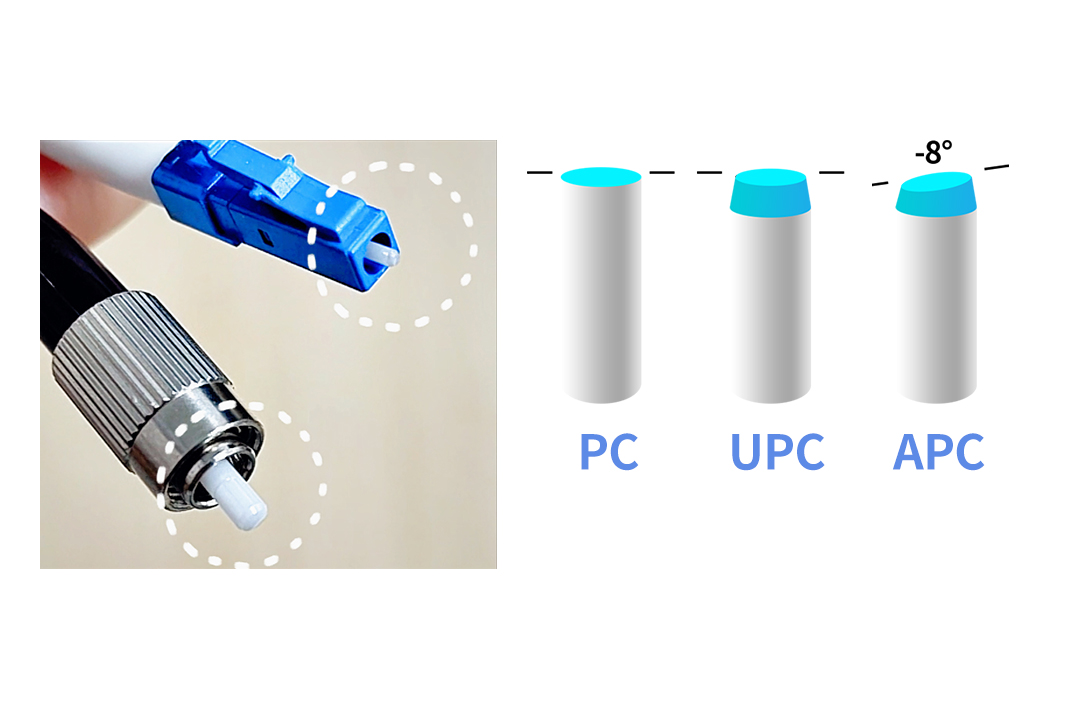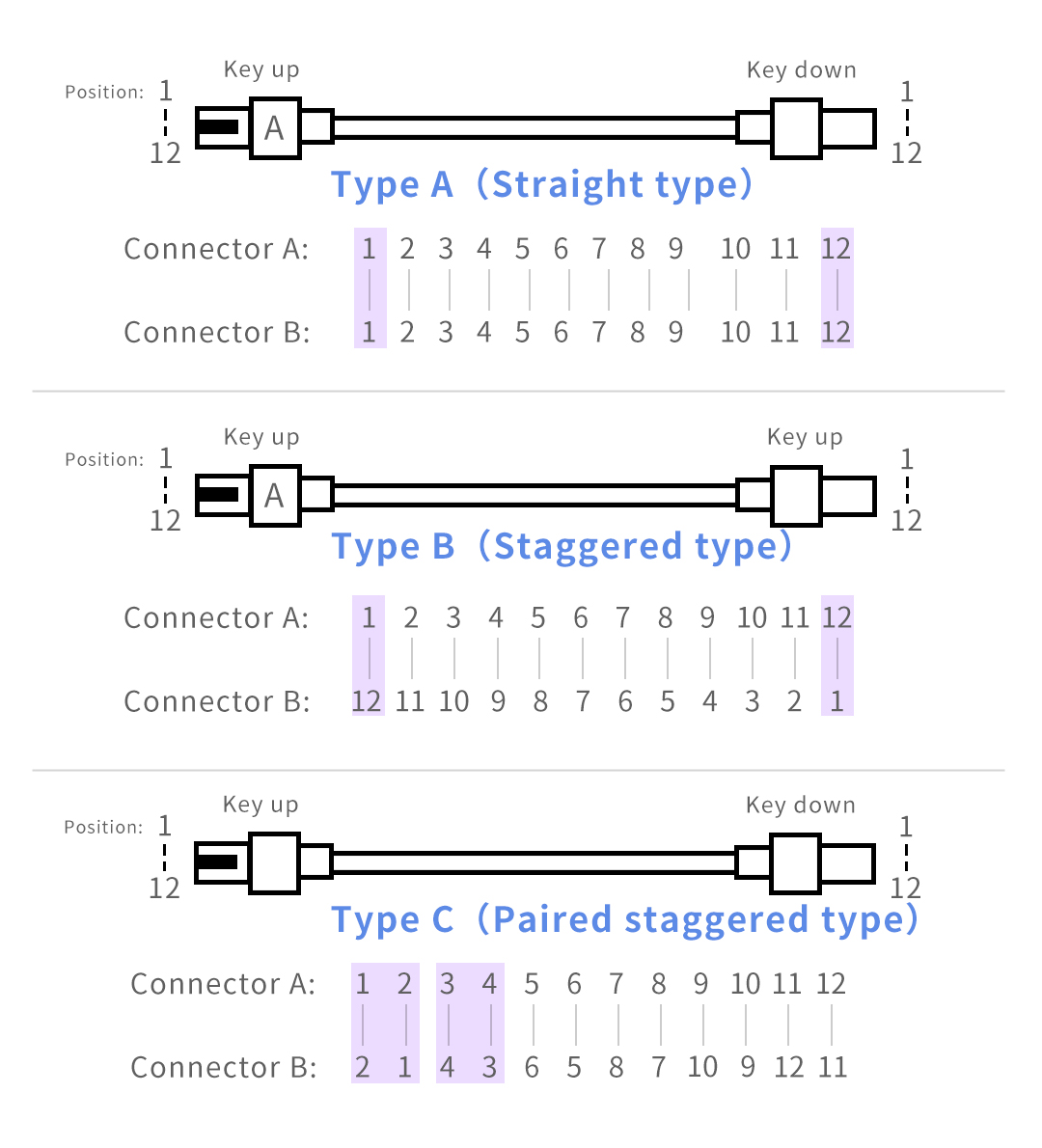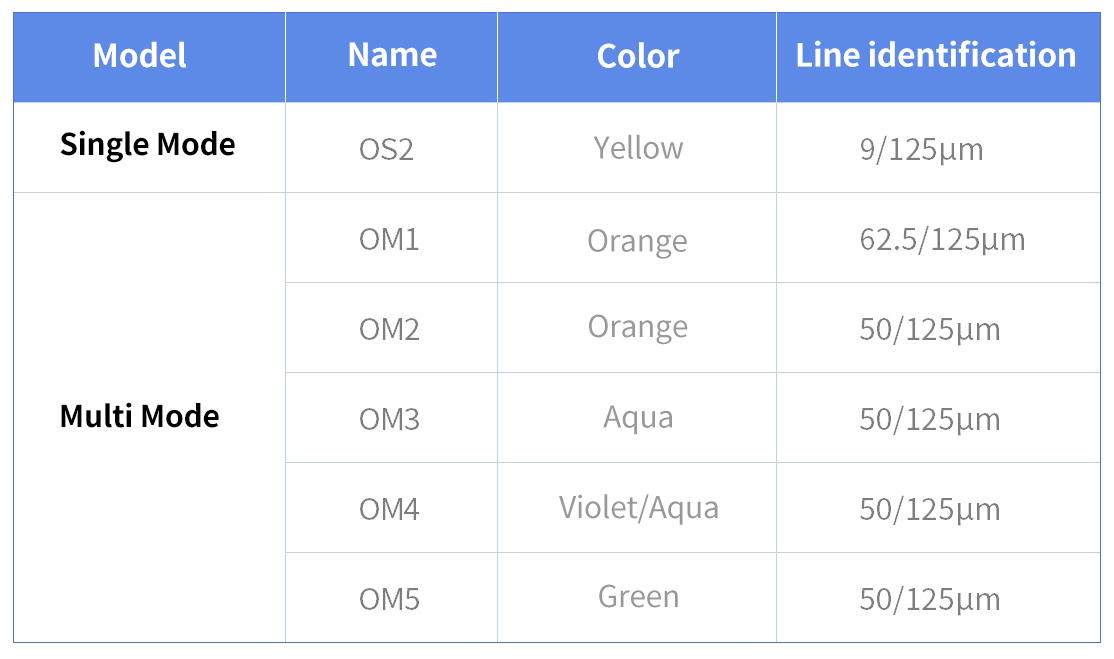
Знание оптических модулей и подбора коммутационных шнуров
В системе оптоволоконной сети правильное согласование оптических модулей и коммутационный шнур очень важно, что не только связано со стабильностью сетевого соединения, но и влияет на эффективность и качество передачи данных. Как профессиональный производитель оптических модулей, ETU-LINK воля представлять ты к всесторонним знаниям по согласованию оптических модулей коммутационные шнуры .
Анализ ключевых коммутационные шнуры параметры
1. Тип интерфейса : Распространенные интерфейсы коммутационных шнуров включают LC, SC, FC, ST, MPO/MTP и т. д. Наиболее широко используются LC, SC и MPO. LC имеет одноволоконные и двухволоконные кабели. Интерфейс MPO часто используется в сценариях высокоскоростной передачи данных, таких как сети 40G и 100G, которые могут реализовать многоядерную параллельную передачу.
 3.
МПО
ядра
:
Распространенные модели включают 8-ядерные, 12-ядерные, 24-ядерные и т. д.; оптические модули ближнего действия.
такие как 40G QSFP+ и 100G QSFP28 часто используются в паре с 8-ядерным или 12-ядерным MPO/MTP
коммутационный шнур
.
3.
МПО
ядра
:
Распространенные модели включают 8-ядерные, 12-ядерные, 24-ядерные и т. д.; оптические модули ближнего действия.
такие как 40G QSFP+ и 100G QSFP28 часто используются в паре с 8-ядерным или 12-ядерным MPO/MTP
коммутационный шнур
.
4. МПО полярность : Последовательность линий MPO имеет три полярности, а именно: Прямой тип (Тип A), перекрестный тип (Тип B) и парный перекрестный тип (Тип C). Оптоволоконные патч-корды MPO с различной полярностью являются подходящий для другое применение сценарии .
 5.
МПО
мужчина и женщина
: Интерфейс МПО
коммутационный шнур
делятся на мужской и женский. Обычно интерфейс оптического модуля принимает мужской тип, а
коммутационный шнур
К нему подключена розетка. Соблюдение принципа соответствия папа-мама обеспечивает точность и стабильность соединения и реализует надежную передачу оптического сигнала.
5.
МПО
мужчина и женщина
: Интерфейс МПО
коммутационный шнур
делятся на мужской и женский. Обычно интерфейс оптического модуля принимает мужской тип, а
коммутационный шнур
К нему подключена розетка. Соблюдение принципа соответствия папа-мама обеспечивает точность и стабильность соединения и реализует надежную передачу оптического сигнала.
6. Режим и цвет : Режимы коммутационного шнура делятся на одномодовые и многомодовые. Многомодовые оптические модули не подходят для одномодовых коммутационных шнуров из-за большого угла расхождения оптического сигнала и сильного затухания сигнала при передаче на большие расстояния; наоборот, оптический сигнал, излучаемый одномодовым оптическим модулем, трудно эффективно соединить с многомодовым коммутационным шнуром, что вызовет проблемы с передачей.

7. Диаметр кабеля : Диаметр кабеля относится к диаметру внешней оболочки кабеля. коммутационный шнур Волокно. Обычные спецификации включают 2,0 мм, 3,0 мм и т. д. Более тонкие диаметры кабеля (например, 2,0 мм) мягче и проще для прокладки, и имеют очевидные преимущества в средах с ограниченным пространством; более толстые диаметры кабеля (например, 3,0 мм) могут обеспечить лучшую механическую защиту и подходят для использования в сложных сценариях прокладки проводов, которые подвержены внешним помехам. Выбор должен определяться на основе фактической среды прокладки проводов и требований к установке.
8. Материал : Материал коммутационный шнур включает в себя материал оптического волокна и материал внешней оболочки. Материал оптического волокна в основном представляет собой стекловолокно, и его чистота и качество напрямую влияют на производительность передачи оптического сигнала; материал внешней оболочки включает ПВХ (поливинилхлорид), LSZH (малодымный без галогенов) и т. д. ПВХ имеет низкую стоимость, но при горении выделяет токсичные и вредные газы; LSZH обладает такими преимуществами, как защита окружающей среды, малодымность и отсутствие галогенов. В местах с высокими требованиями к безопасности и защите окружающей среды, таких как центры обработки данных и офисные здания, коммутационный шнур часто выбираются внешние оболочки LSZH.
Пример соответствия
В качестве примера возьмем оптический модуль ETU-LINK 100G QSFP28 BIDI 80KM.
1. Поддержка скорости 103,125 Гбит/с, дальность передачи 80 км с KP4-FEC;
2. Длина волны: 1273-1286/1295-1309 нм;
3. Тип устройства: передатчик LWDM EML и приемник PIN с SOA;
4. Потребляемая мощность: Коммерческий класс <5,5 Вт.
Из внешнего вида, маркировки и другой информации мы можем узнать, что интерфейс оптического модуля — это интерфейс LC, поэтому его необходимо согласовать с симплексным (одноволоконным) интерфейсом LC. коммутационный шнур ; поскольку это одномодовый оптический модуль, одномодовый желтый OS2 коммутационный шнур должен быть выбран , а тело строки отмечено знаком 9/125мкм ; тип торцевой поверхности должен быть выбран для поддержки передачи данных на большие расстояния и с высокой скоростью У Торцевая поверхность ПК;
Если пространство для проводки в центре обработки данных относительно небольшое, вы можете выбрать коммутационный шнур с диаметром кабеля 2,0 мм для облегчения изгиба проводки; если среда электропроводки относительно свободная и требования по механической защите для коммутационный шнур высоки, вы можете выбрать коммутационный шнур с диаметром кабеля 3,0 мм.
В реальные сценарии применения , в целях соблюдения требований пожарной безопасности и охраны окружающей среды, коммутационный шнур с внешними оболочками LSZH.
Правильно сопоставляя коммутационный шнур с , преимущества производительности оптических модулей могут быть полностью использованы для обеспечения эффективной и стабильной работы сетевых соединений в центрах обработки данных. При фактическом построении оптоволоконных сетей, независимо от того, какой тип оптического модуля, необходимо учитывать все аспекты коммутационный шнур на основе его параметров и тщательно выбрать подходящий коммутационный шнур построить качественную и надежную систему оптоволоконной связи.
Категории
Новый блог
Теги
новые продукты
Оптический трансивер 10G SFP+ ZR 1550 нм 120 км LC Читать далее
100G QSFP28 ZR4 BIDI 80 км оптическое трансивер Читать далее
Оптический приемопередатчик 100G QSFP28 LR с одинарной лямбдой 10 км LC Читать далее
Оптический приемопередатчик 25G SFP28 ZR 1310 нм 80 км LC Читать далее
Оптический приемопередатчик 100G QSFP28 ZR4 80KM LC поколения II Читать далее
Оптический приемопередатчик 100G QSFP28 BIDI 40 км LC Читать далее
Оптический приемопередатчик 100G QSFP28 BIDI 10 км LC Читать далее
© Авторские права: 2025 ETU-Link Technology CO ., LTD Все права защищены.

Поддерживается сеть IPv6